From X-rays to portable ultrasound & VR – how affordable and accessible medical imaging is transforming healthcare
 October 20, 2022 | Dubai, UAE
October 20, 2022 | Dubai, UAE 
Abdul Latif Jameel Health Insights Medical Imaging
The COVID-19 pandemic altered our society in innumerable ways, from how we travel and socialize, to how we earn an income and structure our lives. Yet the biggest impact has inevitably been on our attitude to human wellbeing. With half a billion confirmed cases worldwide and more than 6 million deaths[1], the pandemic reminded us how far we still have to go in improving the quality, accessibility and affordability of healthcare.
Nowhere is this more evident than the emerging markets of the global south, where life expectancies lag shamefully behind those of the developed world. Figures show that people born in the richest countries can now expect to live in excess of 80 years, decades longer than the 50-60 years recorded in the poorest countries.[2]
But things appear to be changing – and for the better. Recent years have seen a huge upswing in health investment across R&D, innovation and digital technology – the beginnings of a concerted effort to democratize healthcare, drive inclusivity, and shape a global medical ecosystem truly fit for the third millennium.
Some US$ 44 billion was invested in health innovation globally in 2021, more than double the previous year’s figure and dwarfing the US$ 2.3 billion invested a decade earlier. Meanwhile, acquisitions within the industry climbed by 50% during 2021, approaching the 1,000 milestone.[3]
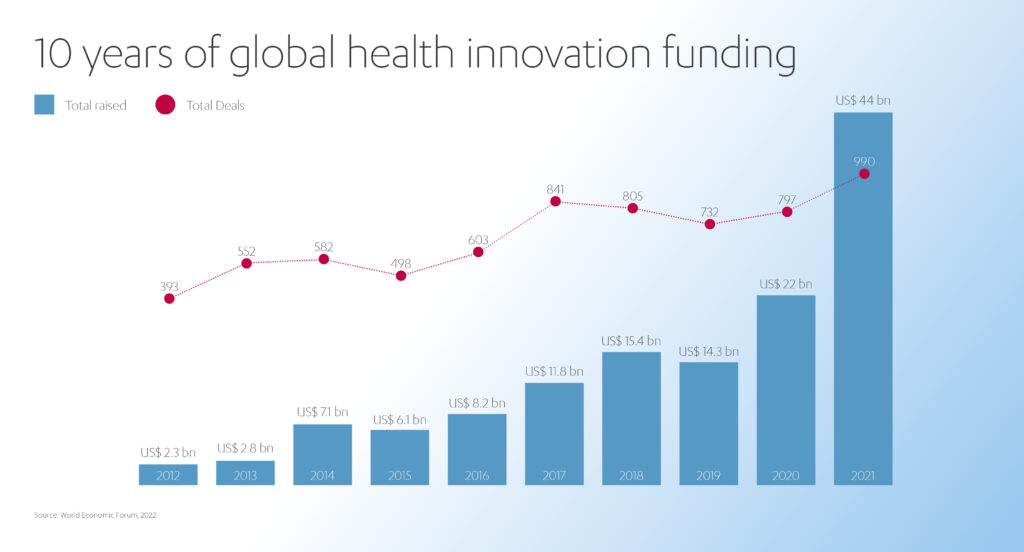
How has all this money been spent?
On a game-changing array of artificial intelligence (AI), machine learning and digital health tools with, what promises to be, truly transformative potential.
Telehealth and digital diagnoses among tech milestones
Any discussion of radical healthcare technologies would be incomplete without acknowledging the rise of mRNA (messenger ribonucleic acid) technology vaccines – an acronym that has entered the public lexicon since being unveiled as the cornerstone of the first effective COVID-19 inoculations.
When injected into the bloodstream, synthetically engineered mRNA molecules carry instructions (the message) to the immune system to build proteins normally triggered by a virus, preparing the body in case the real pathogen should ever strike.
Also proven effective against flu, zika and rabies, research is currently underway to see whether mRNA technology could contribute to the ongoing fight against cancer.[4]

The mRNA revolution is only just beginning. The World Health Organization (WHO) is busy establishing an mRNA technology transfer hub in South Africa. Drug maker Moderna is planning a US$ 500 million manufacturing facility in Kenya. And rival BioNTech is devising similar projects in Rwanda and Senegal.[5]
Away from COVID-19 and other pathogenic hazards, technology is ensuring that treatment plans are becoming ever more personalized.
The awareness that everybody (read: “every body”) is different has spurred the development of AI algorithms to devise individual medical strategies – strategies far more effective than the traditional “one size fits all” approach to healthcare.
The statistical benefits of mass data, coupled with the power of pioneering biotech treatments, promise to improve health outcomes not just within mature markets, but in developing economies too.
Indeed, one of the most significant advances in recent years has been the growth of digital healthcare and the concept of remote telehealth – a logical development, given the dangers of face-to-face contact during the pandemic.
We now live in a world where wearable devices can detect changes in activity and record health biomarkers; where biometric sensors can help people self-monitor by tracking vital signs such as oxygen levels; where patients can have virtual appointments with medical professionals thanks to low-latency video technology; and where disease management apps can help populations in rural areas access world-class digital care programs.
Naturally, to cure an illness one must first correctly diagnose it – and that is where state-of-the-art medical imaging technology is coming to the fore and vying for recognition as the next great leap forward.

Medical imaging: Picturing a clearer future
The desire to look inside our bodies is nothing new – dissection, and the study of anatomy dates to before the Middle Ages – but seeing inside to diagnose ailments is also long practiced. In 1818, French physician Rene Theophile Hyacinthe Laennec was inspired by children playing with tubes to communicate and listen to each other and, borne out of his frustrations with the traditional practice of placing his ear on the chests of his patients to listen to their breathing, he went on to invent the stethoscope. In a generation where we have seen the invention of home computers, the telephone, the internal combustion engine, light bulbs, atomic bombs, the internet, self-driving cars and space travel, the mainstay of a physician’s basic kit remains the same. This 200-year-old creation is still in constant daily use in modern medical care, and yet, the ubiquitous stethoscope is so synonymous with the healthcare industry it is seen hanging around the necks of physicians in every corner of the world.
Today however, the wider field of medical imaging includes such tools such as radiology, ultrasound, CT scans, MRI and more and enables images of the body’s interior to be safely captured, for the purpose of diagnosing and treating illnesses and diseases.

One recent example is the Atusa scanner, from iSonohealth – the world’s first AI-driven portable and automated 3D breast ultrasound scanner. Accurate, fast and easy to use, Atusa automatically enables repeatable breast ultrasound imaging at point of care, without the need for a trained ultrasound operator.
Furthermore, its intuitive interface makes it easy for patients to use, with each scan only taking two minutes.
Such non-invasive methods are safer, faster and less painful than surgical interventions, reducing the need for hospital stays and decreasing the risk of post-operation infections or other complications.
Modern medical imaging provides high-resolution views of organic structures normally obscured by skin and bone, with the benefit of clearly defined soft tissue contrasts. The process offers a safer, viable alternative to the potentially harmful ionizing radiation of traditional X-rays, accidentally discovered by German physicist Wilhelm Rontgen in 1895, giving birth to radiology.
Unfortunately, as well as being very effective, much of the latest modern medical imaging equipment – like most new technologies – can also be rather expensive, bulky, and often complicated to use and interpret. As a result, it’s estimated that some 4.7 billion people around the world lack access to adequate medical imaging facilities[6], with the negative implications for diagnosis and treatment that this implies.
Abdul Latif Jameel Health strongly believes the powerful screening and diagnostic benefits of medical imaging should be accessible by patients everywhere, regardless of economic standing, geography, infrastructure or population distribution. Already we have formed a number of partnerships and, with the JIMCO Life Sciences Fund, made a series of significant financial investments in the realm of medical imaging, supporting the technology’s evolution into a major new force in the world’s healthcare arsenal.
Our partnerships with the healthtech innovators behind Butterfly iQ+, Holoeyes and Melody International, for example, hold vast potential to bring the benefits of medical imaging to communities where such life-changing technology was previously not readily affordable or available.
Helping Butterfly take flight
Butterfly Network’s iQ+ ultrasound device has been hailed as ‘the stethoscope of the future – a true window into the body’. The USA firm’s innovation represents a significant technological advancement, being the world’s first single probe, handheld, whole-body ultrasound solution.

The high-quality images it produces can be shared instantly with medical experts around the world, helping physicians on the ground carry out rapid diagnoses and determine necessary interventions, with potentially life-saving consequences.

Merging cutting-edge semiconductors with AI and cloud technology, the Butterfly iQ+ is also very affordable, which has the potential to drastically expand the capabilities of health workers in remote or underdeveloped areas. Our strategic distribution partnership will help bring the device tol 2 billion people across the Middle East, Turkey and India.
“The power of the Butterfly solution transcends the limits of traditional ultrasound by delivering valuable information to improve clinical decision-making and the care that is delivered,” says Dr Todd Fruchterman, President and Chief Executive Officer of Butterfly Network.
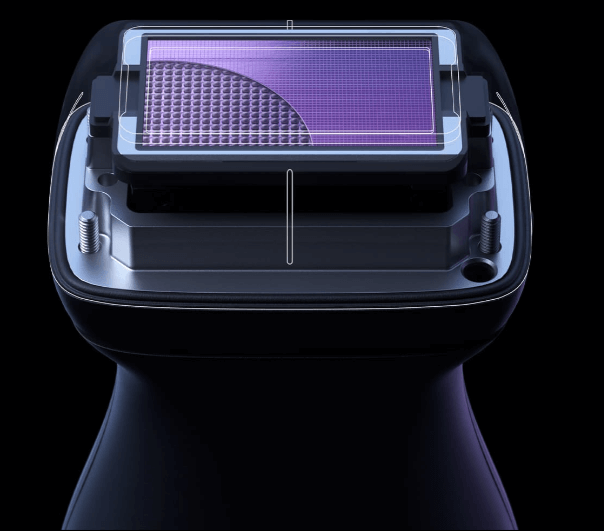
The device is centered around Butterfly’s patented ultrasound-on-chipTM – a technology called CMUT(Capacitive Micro-machined Ultrasound Transducer). The process of creating ultrasound images with this chip took seven years of research and development. The ‘traditional’ method of ultrasound imaging is to use piezoelectric crystals shaped in a format to create an ultrasound beam. Different crystals need to be formed into different shapes and beam frequencies for specific use cases. This is why other systems require multiple, expensive probes for whole-body scanning.
Butterfly’s chip, with sophisticated signal processing, accomplishes whole-body scanning with a single, affordable probe.
There are some sobering health statistics to consider here.
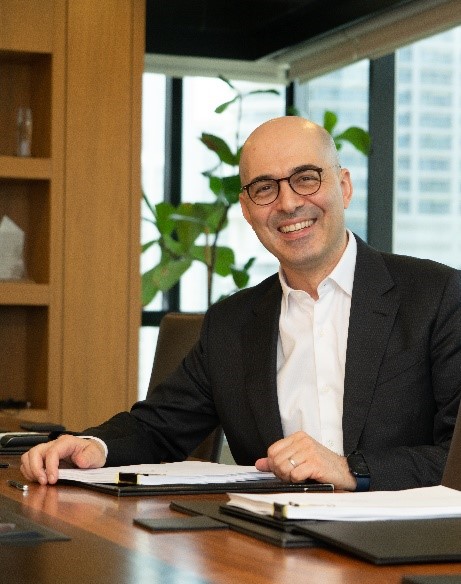
Chief Executive Officer, Abdul Latif Jameel Health
Approximately every 90 seconds a mother somewhere dies from the complications of childbirth[7]; and around 700,000 kids die every year from complications of pediatric pneumonia.[8] It is hoped that, potentially, ready affordable access to medical imaging, such as the Butterfly iQ+ probe, could help avoid some of these tragedies.
Dr Akram Bouchenaki, Chief Executive Officer of Abdul Latif Jameel Health, says: “The capabilities of this innovative, portable and versatile handheld ultrasound solution know no bounds and we are committed to delivering this technology to serve more than 2 billion people.”
Extending Reality (XR) with Holoeyes
A uniquely Japanese partnership of a leading surgeon and video game designer let to the creation of the innovative business Holoeyes.

Holoeyes extended reality (XR) kit uses next-generation technology to help medics peer within the human body with unprecedented clarity, enabling rapid and accurate diagnoses of multiple conditions and precise pre-planning of complex surgery.
It also offers incredible new potential for medical education.
By presenting a surgical target zone in three dimensions, Holoeyes allows medics to establish proximity to surrounding organs and blood vessels, reducing the chances of unforeseen complications.
The process is deceptively simple:
- the physician uploads a CT or MRI scan to the Holoeyes website
- using its proprietary AI technology, Holoeyes generates a 3D image and VR application from the scan in just 15 minutes
- the application is downloaded to a viewing device and is ready to use
Thanks to its revolutionary medical imaging ability, Holoeyes’ aims to increase the efficiency and safety of surgery, improving outcomes for thousands of potential patients.
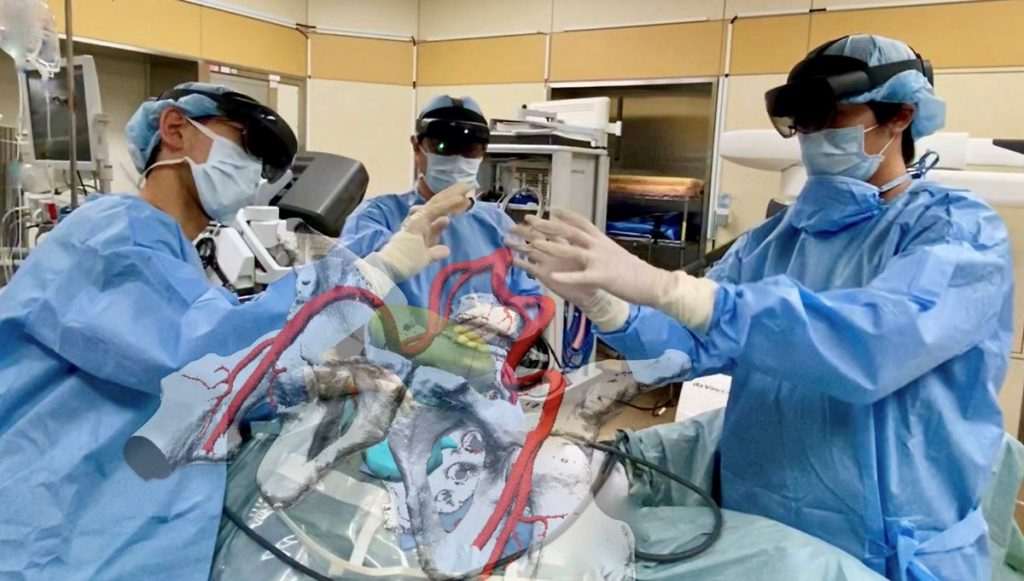
A suite of support software includes Holoeyes XR, a conference interface for consultations; Holoeyes Edu, designed to help train medical and nursing students; and Holoeyes MD, the technical hub governing the creation of the VR models.
One Japanese hospital which has already deployed Holoeyes says it “dramatically improves the understanding of the location and positioning of items of interest when compared with viewing 2D images on a monitor, and this information can be easily shared with other doctors. This reduces risk during surgery and is very effective in teaching young and less-experienced physicians.”[9]
Enthused by Holoeyes’ mission, we are supporting the Japan-based company by distributing its VR tech and medical education support software right where it’s needed most – to more than 2.4 million surgeons across the Middle East and Africa.
The timing of the innovation could hardly be better. “Children today are already used to learning on screens and are comfortable with the idea of VR technology. It is a trend we cannot escape, and it will affect medicine as much, if not more, than any other field,”[10] says Dr Bouchenaki.
Singing the same tune with Melody
What if there was a way to provide mothers-to-be experiencing high-risk pregnancies with ongoing monitoring – no matter how remote their geographic location?
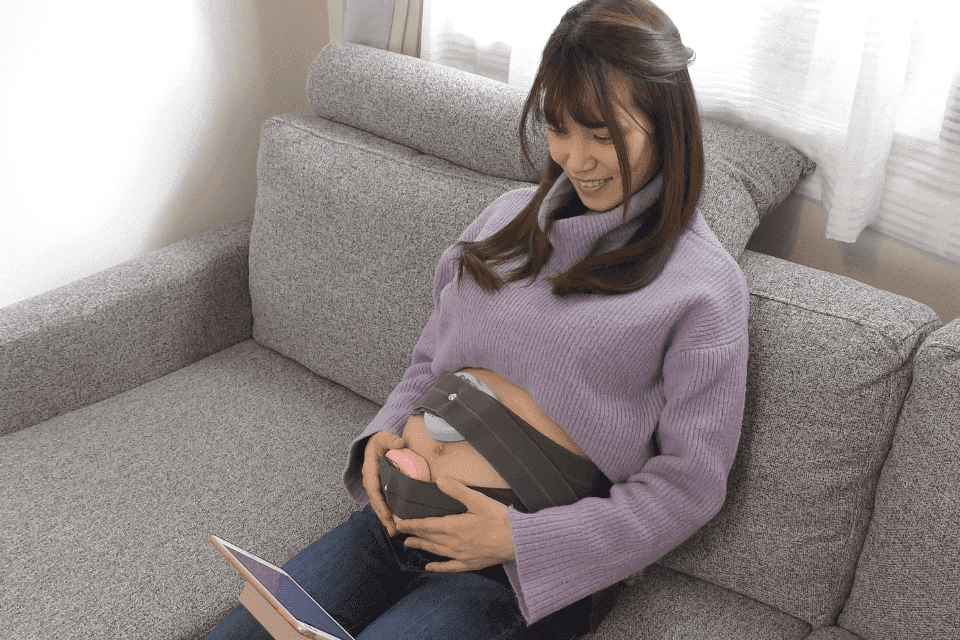
This is the challenge addressed by Japan-based Melody International with its innovative ‘Melody i Mobile Fetal Monitor iCTG’ – a cloud-based mobile wireless monitoring platform.
Already approved by Japanese, Thai, Burmese and Bhutanese regulators, with the USA pending, the integrated platform comprises a fetal heart monitor, a uterine contraction monitor, and a smart tablet for live data and internet connectivity.
With the expectant mother wearing the device at home, real-time readings can be monitored by remote physicians. These experts can authorize a rapid intervention if needed, even providing hospitals with personalized treatment plans prior to arrival.
Melody International Founder and Chief Executive Yhuko Ogata says the simple, lightweight and fully portable device would make an impact by cutting risk and saving lives in regions where such perinatal monitoring is not readily available.

She explains: “Thanks to this technology and the platform developed by Melody International, we have made it possible for both expectant mothers and medical personnel to know the condition of the fetus anytime, anywhere.”[11]
Dr Bouchenaki adds: “We believe this innovative and intuitive monitoring system will be of great value in accelerating accessibility to perinatal monitoring and improving the outcome for millions.”[12]
Eventually, it is hoped the Melody mobile fetal monitor will help reduce perinatal emergencies and deaths in a territory of more than 1.9 billion people across selected Asia, Middle East and African markets – enabling safer and more secure births for mothers regardless of where they call home.
Abdul Latif Jameel Health helps kickstart game-changing technology
Advances in medical imaging carry the promise of greater health equality for those people most in need: the poor, the high-risk, and the geographically isolated. Whether helping to diagnose illnesses, assisting surgeons during operations, monitoring infants during gestation, or training the physicians of tomorrow, modern medical imaging demonstrates the power of technology to transform healthcare.
With such momentum massing behind medical imaging, the coming years will see the technology overcoming some of the challenges it has faced until now: how to deal with the soaring number of images requiring human interpretation; harmonizing a sometimes fragmented IT structure; tackling the high initial costs associated with any nascent technology; and encouraging appropriate industry consolidation to help maximize technical resources and human talent.
These issues are far from insurmountable and can often be circumvented by introducing comprehensive enterprise data management systems, such as vendor neutral archives (VNAs), to streamline the process of storing, accessing and protecting high-volume image repositories.
Motivation is high, given that studies link the use of medical imaging with fewer surgeries, shorter hospital stays and lower mortality rates.[13]
“The mission of Abdul Latif Jameel Health is to act as a bridge to accelerate access to healthcare innovation in parts of the world that would not otherwise benefit from these innovations,” says Dr Bouchenaki.
“Breakthroughs in medical imaging will help improve people’s quality of life by addressing unmet medical needs, and by using innovative technologies to boost the healthcare systems of the countries in which we operate.”
Butterfly iQ+™ is a Class II/IIa/B portable ultrasound system designed for ultrasound imaging by trained healthcare practitioners only.
[2] https://ourworldindata.org/life-expectancy
[3] https://www.weforum.org/agenda/2022/01/biggest-healthcare-shifts-experts-expect-to-see-in-2022/
[4] https://www.nature.com/articles/nrd.2017.243
[5] https://www.bmj.com/content/375/bmj.n2744
[6] https://www.ncbi.nlm.nih.gov/pmc/articles/PMC5704652
[7] https://www.amnestyusa.org/themes/womens-rights/maternal-health/
[8] https://www.who.int/news-room/fact-sheets/detail/pneumonia
[9] https://holoeyes.jp/wp-content/uploads/2021/08/hiroshima.pdf
[10] https://alj.com/en/perspective/sharing-a-vision-of-a-virtual-future/
[11] https://alj.com/en/perspective/singing-the-same-tune/
[12] https://aljhealth.com/en/news/abdul-latif-jameel-health-melody-intl-announce-strategic-collaboration/
[13] https://www.ibm.com/watson/health/resources/medical-imaging-challenges/
Related Articles
For press inquiries click here, or call +971 4 448 0906 (GMT +4 hours UAE). For public inquiries click here.












